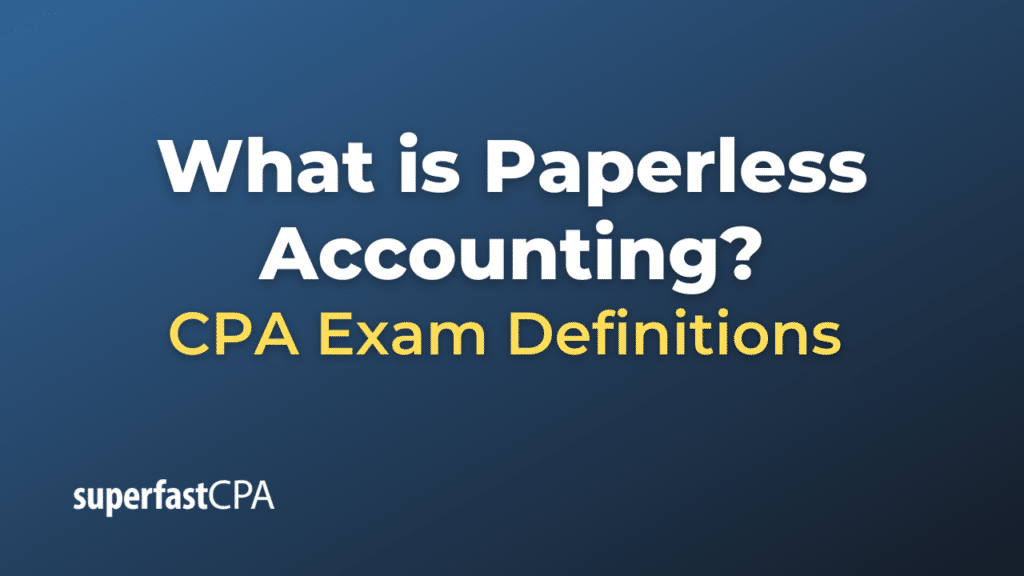Paperless Accounting
Paperless accounting, as the name suggests, refers to the practice of using electronic systems to collect, process, store, and manage financial and accounting data, instead of relying on physical, paper-based records.
This approach typically involves the use of accounting software, cloud-based technologies, and digital tools that allow for the electronic processing and storage of financial transactions. This might include issuing digital invoices, keeping electronic copies of receipts, using digital signatures, and maintaining electronic records of all financial transactions.
Advantages of paperless accounting include:
- Efficiency: Electronic processing can be faster and more efficient than manual paper-based processes. It reduces the time and effort needed to record, retrieve, and manage financial data.
- Cost-Effective: It can save money by reducing the need for physical storage space and the cost of paper, ink, and other related materials.
- Accuracy: Digital tools can automate calculations and other processes, reducing the chance of human error.
- Accessibility: Cloud-based solutions allow for easy access to financial data from anywhere with an internet connection.
- Environmentally Friendly: By reducing the need for paper, this approach can also be more sustainable and environmentally friendly.
However, going paperless also requires secure and reliable digital systems to protect the integrity and confidentiality of financial data. It’s important to have proper data backup and recovery systems in place to protect against data loss.
Example of Paperless Accounting
Let’s consider an example of how a small business could implement paperless accounting:
Step 1: Choose and Implement Accounting Software: The first step towards paperless accounting is to choose and implement suitable accounting software. There are many options available, such as QuickBooks, Xero, or Zoho Books, depending on the size and needs of the business. The software will allow the business to input all financial transactions digitally and will automate many accounting processes.
Step 2: Electronic Invoicing and Receipts: The next step is to switch from paper to electronic invoicing and receipts. The accounting software will typically have this capability built in. Instead of sending or receiving paper invoices and receipts, all invoices and receipts will be sent and received electronically, typically by email.
Step 3: Digital Record Keeping: All financial records will be kept digitally. This includes bank statements, sales records, expense receipts, payroll records, tax documents, and any other financial documents. This may require scanning paper documents into digital form. Many banks and financial institutions now offer digital statements and records, which can be directly imported into the accounting software.
Step 4: Cloud Storage: The use of cloud storage will allow for easy access to financial records from anywhere with an internet connection. It also provides a secure and reliable method of storing digital records. The accounting software will typically have cloud storage capabilities built in.
Step 5: Training and Support: The business will need to train its staff on how to use the new digital accounting system. This may involve training on how to input transactions, how to generate and send electronic invoices, how to retrieve and review financial records, and how to use the various features of the accounting software.
By following these steps, the small business could transition to a fully paperless accounting system. However, this is a significant change that will require careful planning and implementation. It’s also crucial to ensure that the digital accounting system is secure, reliable, and backed up regularly to protect against data loss.













